
TL;DR: The new coalition Government’s zeal in its first 100 days for freezing and cutting spending and investment at the central Government level is having an unintended and unpromised effect.
It’s pushing more inflation out and up into the wider economy through new fees, user pays charges, rates hikes, higher rents and a slather of hidden taxes from both councils and Government agencies. This week’s transport funding shifts showed how cost cutting centrally is turning into higher fees, fares, rates and charges locally, which is upending the Government’s stated aim of reducing the cost of living.
The coalition’s deliberate ignoring of any emissions effects is also set to fire up fuel inflation through much, much higher Emissions Trading Scheme costs, meaning tax cuts for those on lower incomes are set to be overwhelmed by higher fees, fines and charges for fuel, rates, parking, speeding and commuting. The risk is of a second-round feedback loop of extra costs from higher mortgage rates if the Reserve Bank sees domestic inflation from such fees and charges being too sticky and high.
(Paying subscribers can see more detail and analysis below the paywall fold and in my podcast above. I’ll open it up for public sharing and listening if this article gets over 100 likes, to indicate approval from paying subscribers.)
Elsewhere in Aotearoa’s political economy at 10 am:
Finance Minister Nicola Willis yesterday prepared the ground for a budget deficit forecast for 2026/27, rather than the $100 million surplus forecast by Treasury before Christmas. She told reporters slower GDP and tax growth would make a return to surplus harder and signalled more news was likely when the Government released its Budget Policy Statement on March 27. NZ Herald She also answered a National MP’s Parliamentary question (2) about the Crown accounts to the end of January yesterday to talk about fiscal headwinds.
The Crown accounts actually showed the OBEGAL deficit for the seven months to the end of January was $71 million lower (ie better) than expected at $3.655 billion because tax revenues were $752 million lower than expected in December, but spending was $1.026 million lower than expected. Net debt of 20.7% of GDP was lower than the 21.4% forecast in December.
Energy Minister Shane Jones effectively ended the previous Government’s ban on oil and gas exploration onshore, yesterday announcing Greymouth Gas Turangi had been granted a permit to drill in a 61.9 sq km area northwest of Stratford in Taranaki for the next 10 years.
Auckland’s largest real estate agency chain, Barfort & Thompson, yesterday reported sales and listing figures for February, showing a surge in listings to its highest levels in nearly 13 years (up 2,255 to 5,382) as sellers hope investor tax changes and lower interest rates kick sales and prices higher. Sales of 633 homes were up 54.4% from the Gabrielle-affected February a year ago. However, they are only back at 2019 levels. Barfoot MD Peter Thompson said the listings surge with relatively low sales had created a “logjam” and “the largest buyers’ market we have seen since 2011.”1
Robbing Peter to pay Paul: a nation of inflation displacement
The Government’s rhetoric in the election campaign and in the first 100 days ending on Friday has been about reducing the cost of living and bearing down on ‘wasteful’ Government spending, with the implication it fueled inflation and removing it will depress inflation. In reality, the Government is in effect slashing its cash deficits by robbing Peter to pay Paul, transferring the blame and costs out to councils and departmental heads.
This week’s Government Policy Statement (GPS) on Transport was a perfect illustration of how an apparent tightening of belts in the Beehive and a ‘return to the basics’ is simply shifting costs and inflations back out to voters through higher council rates, higher fares, new user-pays charges and higher penalty fees.
In summary, the Government announced:
a $50 increase in annual vehicle registration fees over the next two years to help pay for road maintenance;
a 22c/litre increase in fuel taxes in the two years from January 2027;
a $430 million cut per year in public transport operational and infrastructure spending, adding it expected that to be offset by higher council payments and higher ‘fare box’ contributions from commuters, which councils have said will lift fares and rates;
a $250 million cut per year in local road spending, which councils have said will have to be offset either by higher rates or lower road spending; and,
at least doubling fines for speeding, drug use, alcohol offences and not wearing seatbelts to make up for inflation since 1999, which was the last time fines were updated.
It also signalled users should pay for new roads and for as much public transport and maintenance as possible, including through tolls and congestion charging.
The NZTA is expected to maximize its own revenue and consider opportunities to supplement that revenue with contributions from beneficiaries/users whenever possible.
However, just maximising revenue does not go far enough, and alternative funding tools are required for investment in land transport. The Government expects the Ministry and NZTA to work together on the future of land transport revenue and report to the Minister within three months on this work.
This work programme should include how each of the following funding tools will be incorporated into the provision of investment in land transport: tolling, time of use charging, equity finance and value capture. Draft GPS
Transport Minister Simeon Brown was even more specific in his statement:
“I expect the NZ Transport Agency to consider different ways of funding and delivering major transport projects. This includes ‘Build, Own, Operate, Transfer’ equity finance schemes, and value capture. Ensuring local government pays their fair share, funding should also be supplemented by increased public transport fare-box recovery and third-party revenue.” Brown statement
Ready for higher petrol taxes too?
The biggest increases in household living costs have been around housing (including rents, mortgage costs, rates and repairs) food and transport costs, as indicated in household living cost indices published yesterday by Stats NZ. They showed average weekly household expenditure on housing, food and transport rose 20% to $950 a week between 2019 and 2023, with domestic air transport costs rising 89.6%, property rates rising 27% and private car costs rising 26%.
Central and local Government fees and charges have risen 17.5% over the last four years, which was actually less than other drivers of inflation, which were 23.3% over that period and dominated by housing and food costs.
Perhaps surprisingly, petrol costs only rose 11.1% to an average of $53.90/week over the four years to the end of June 2023. That was partly due to cuts in fuel levies after Russia invaded Ukraine. Another reason for a lack of price increases for fuel was the relatively low amount from the Emissions Trading Scheme because the carbon price was low for most of that period as forestry companies pledged to plant thousands of hectares of pine forests as carbon sinks.
One other way the Government’s decisions to save money may leak out into inflation elsewhere is through the Emissions Trading Scheme. The GPS was notable for saying Transport policy was not responsible for reducing emissions, with the load taken up by the ETS.
Given the Government’s moves to reduce subsidies for buying electric cars, which saw purchases collapse in January and February, and for public transport, emissions are expected to rise and create a bigger emissions reduction deficit for the Government to make up by squeezing ETS unit prices higher. That would flow through into higher fuel costs, although the Government could encourage even more tree planting to keep unit costs low in the short term.
Parliamentary exchange of the day
Alternatives to higher ETS, rego and congestion fees?
Hon Julie Anne Genter: How can people in New Zealand expect to have frequent, reliable bus and train services to give them an alternative to driving a car when he is cutting funding for public transport and making it harder for local councils to make public transport reliable and on time?
Hon SIMEON BROWN: Well, that side of the House thinks throwing more money is the solution to every single problem. Well, they had six years and they spent $228 million on "Auckland Light Fail". Aucklanders didn't get anything, but taxpayers spent hundreds of millions of dollars. Hansard Question 6 yesterday.
Quote of the day
The GPS signal
“This is probably the most ideological, unbalanced and petty transport policy the country has seen. It is one that, despite the government's rhetoric, will ultimately result in worse safety outcomes and fewer alternatives for driving, meaning more congestion, emissions and kiwis spending more on transport.” Matt Lowrie via Greater Auckland
Cartoon of the day
Free lunches and entitlements
Timeline cleansing nature pic of the day
Flowers and insects
Ka kite ano
Bernard
He wishes.








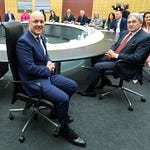
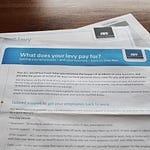
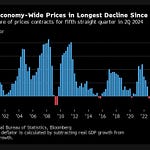
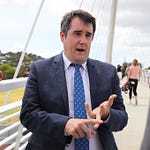



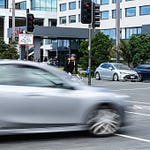
Share this post